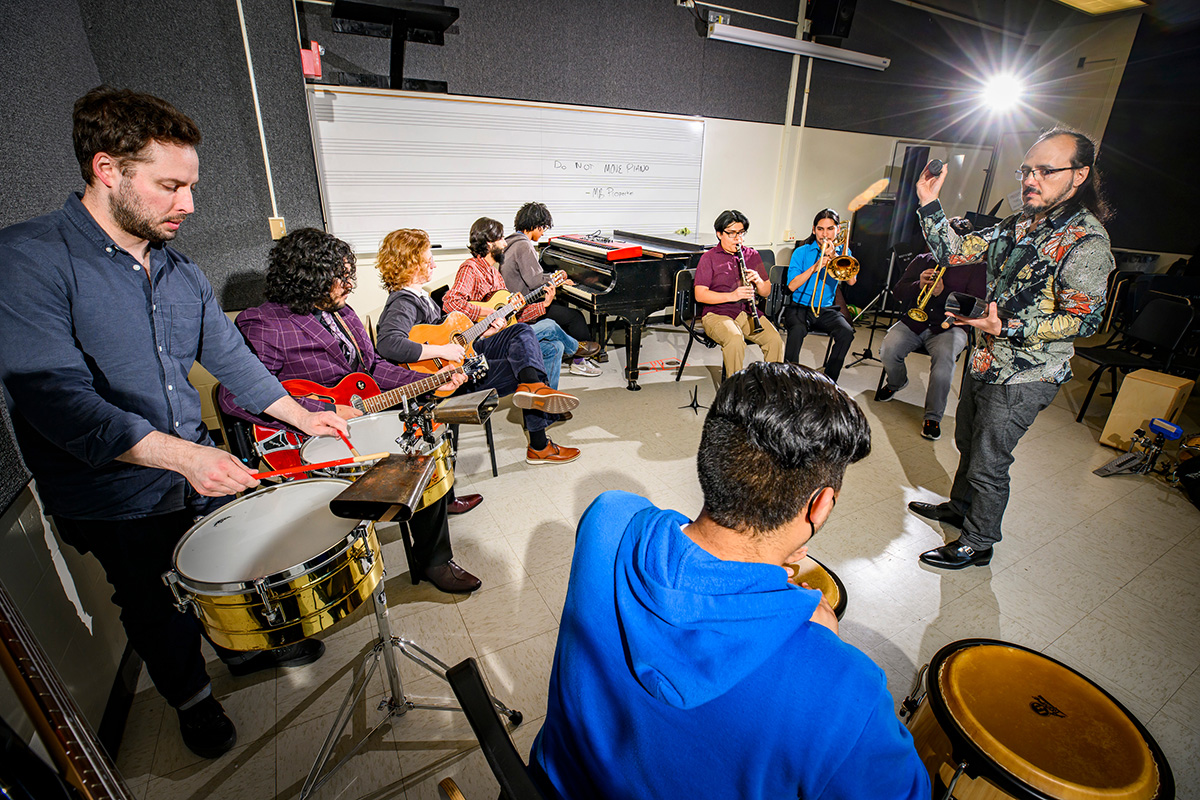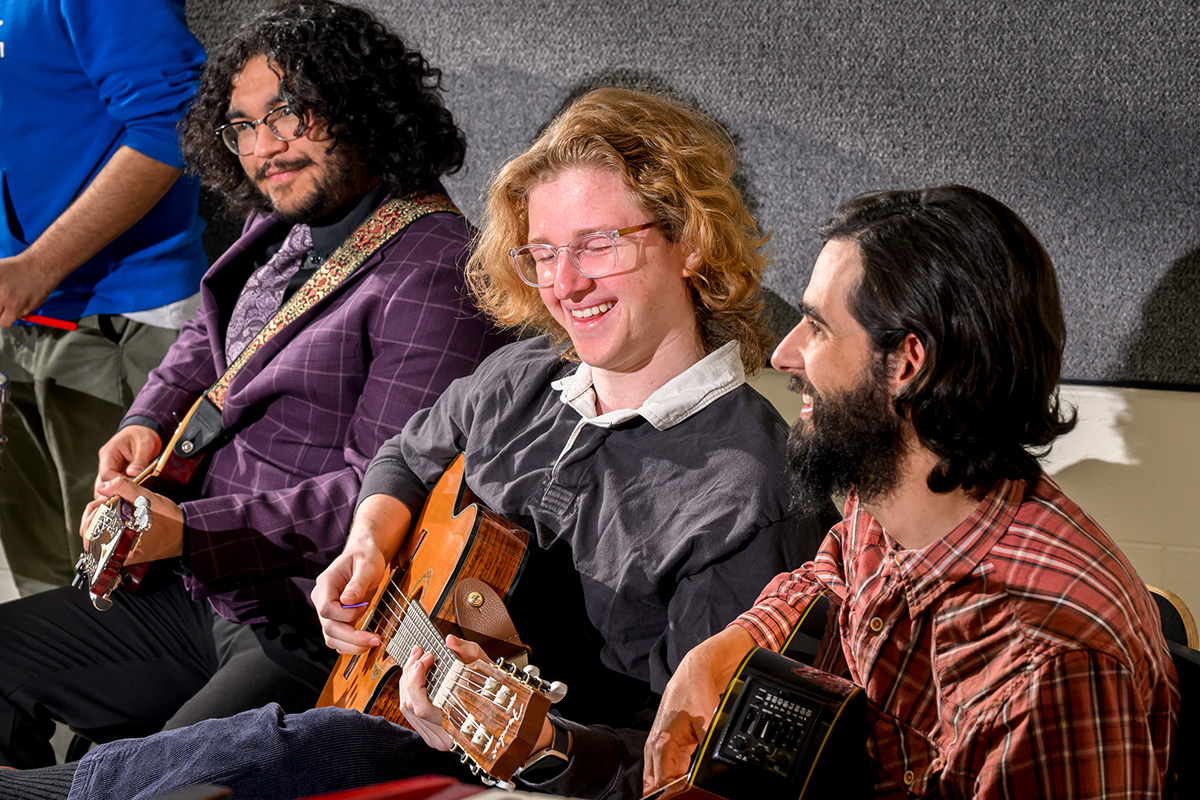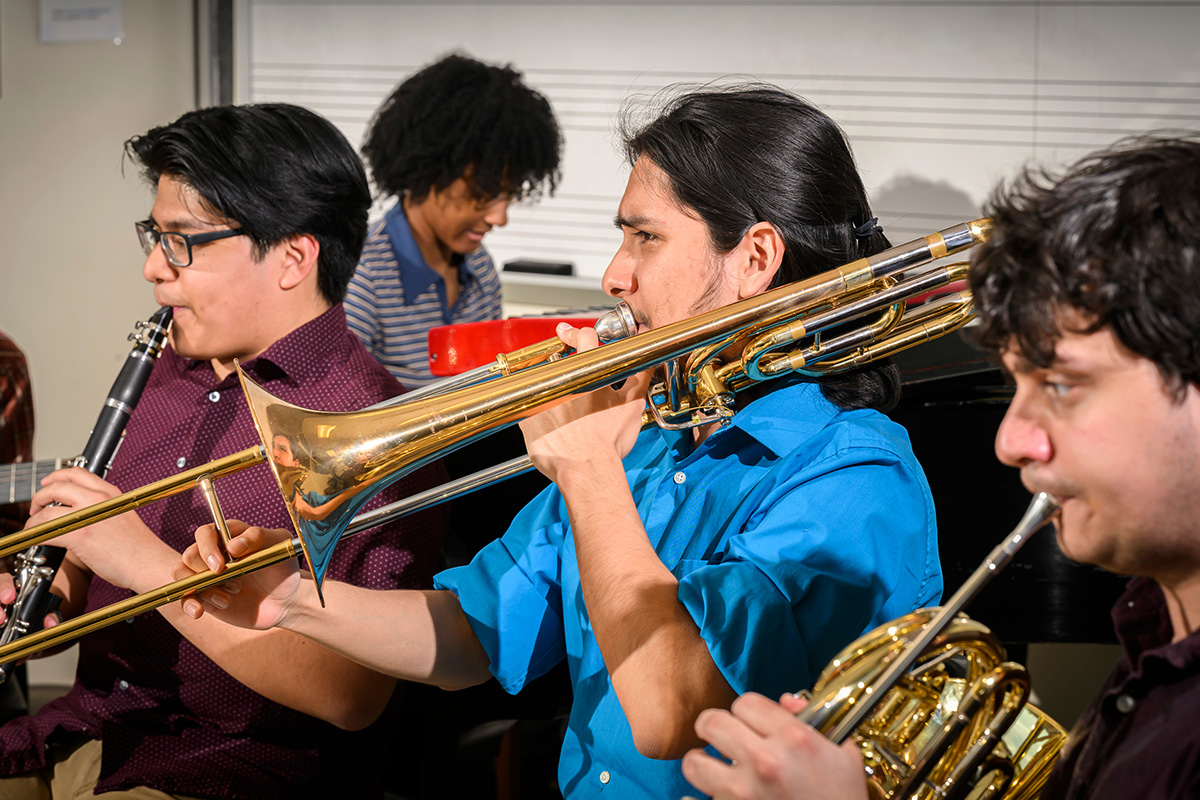
The Latin American Ensemble prepares for its upcoming performance featuring a musical journey through Latin America and Spain. The new ensemble is an experimental group directed by music professor Guido Sánchez-Portuguez.
Photo by Fred Zwicky
CHAMPAIGN, Ill. - A new ensemble is helping to diversify the repertoire of music that is performed by the School of Music at the University of Illinois Urbana-Champaign. The Latin American Ensemble plays a broad range of Latin American music from Mexico and throughout Central America, South America and the Caribbean.
The ensemble was started in the fall. It will play its final concert of the year on April 21 at 7:30 p.m. in the Recital Hall at Smith Memorial Hall. Admission is free.
Guido Sánchez-Portuguez, a guitar professor in the School of Music, said he started the ensemble because he wanted a group that was devoted to playing underrepresented types of Latin American music.

Students in the Latin American Ensemble rehearse in the Music Building. The group plays a broad range of Latin American music, including lesser-known styles.
Photo by Fred Zwicky
The idea for the ensemble grew out of conversations about how to diversify the repertoire and teaching methods in the School of Music, Sánchez-Portuguez said. He said the Latin American music offerings in most music schools are limited to Afro-Cuban music, salsa, boleros and works by a few classical Latin American composers, and they rarely delve into lesser-known styles.
"Our mission is to play a lot of Latin American music that is not known in the United States, because the tendency is to view Latin American music as salsa or merengue. But there is other music that is under the radar and doesn't get played," he said. "Students get to learn about the styles and learn about the stories and traditions and get to play them."
This year, the ensemble has played Ecuadoran waltzes, Afro-Peruvian pieces, Costa Rican boleros, Venezuelan joropo, Brazilian choro and bossa nova, among other styles.
The ensemble is open to music and non-music majors, and participants are chosen through auditions. It currently has 11 students, most of whom are Latino, and Sánchez-Portuguez sometimes sings or plays percussion, in addition to conducting the group.
The instruments vary depending on who joins the ensemble. Currently they include a clarinet, flute, two French horns (whose players can also play trombone and trumpet), guitars, percussion and piano. Sánchez-Portuguez arranges the music to adapt to the instrumentation available.

The Latin American Ensemble is a partnership between the School of Music and the Center for Latin American and Caribbean Studies.
Photo by Fred Zwicky
Sánchez-Portuguez proposed a partnership for the ensemble with UI's Center for Latin American and Caribbean Studies.
The center's director, Gisela Sin, was enthusiastic about the group and the potential for connecting to the community through music, as well as providing an opportunity for more people to be engaged in playing music.
Community engagement is a big part of the ensemble's mission, Sanchez-Portuguez said, and the group visited a local school and several suburban Chicago schools this year.
Sin said the Center for Latin American and Caribbean Studies supported the ensemble financially by providing the money for a teaching assistant and for out-of-town school visits, and by buying some instruments.
In addition to the school visits, the ensemble performed several concerts this year, including a very popular Latin Valentine concert around Valentine's Day at which the group played Latin American love songs.






